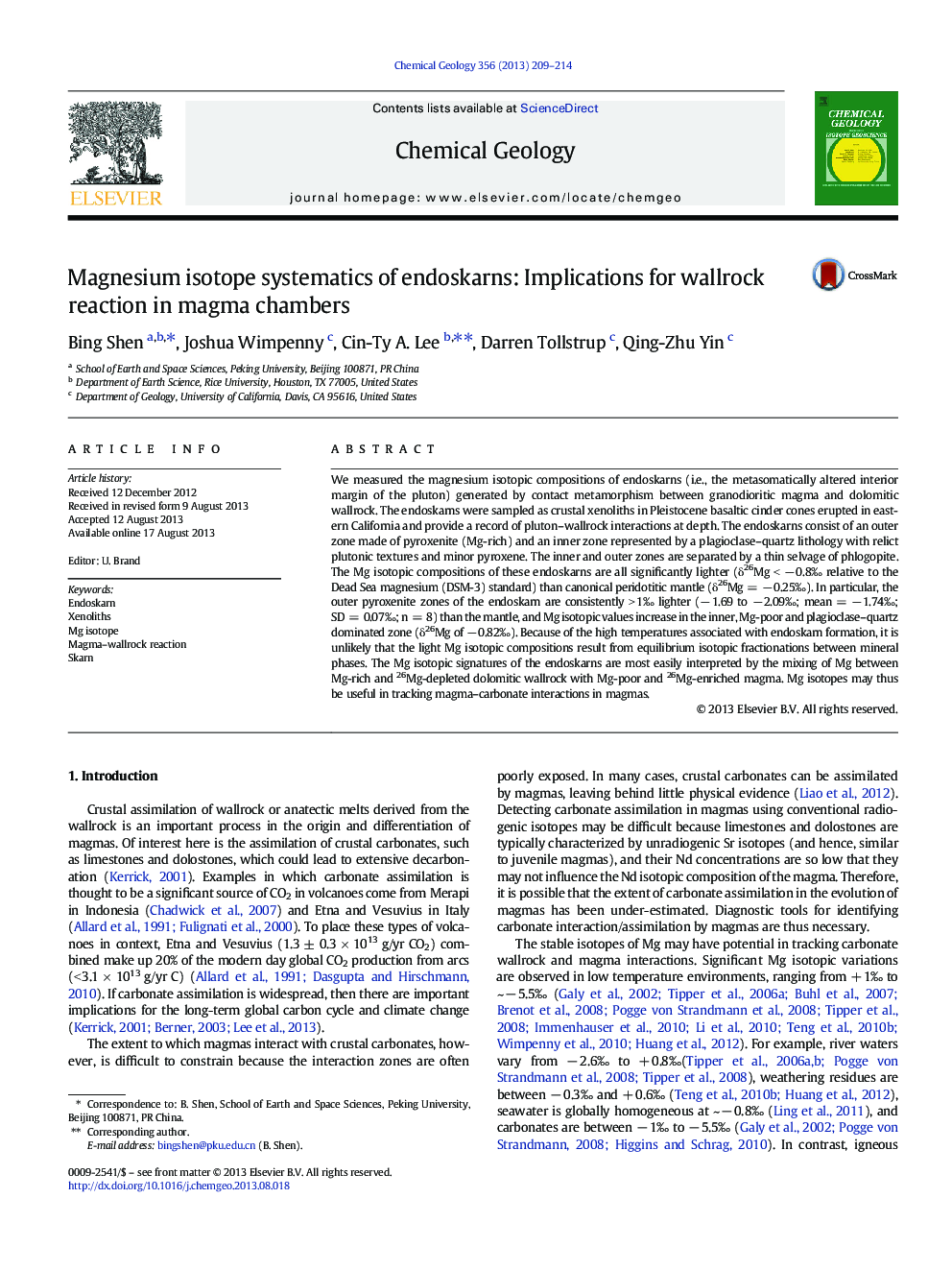| Article ID | Journal | Published Year | Pages | File Type |
|---|---|---|---|---|
| 4698906 | Chemical Geology | 2013 | 6 Pages |
Abstract
We measured the magnesium isotopic compositions of endoskarns (i.e., the metasomatically altered interior margin of the pluton) generated by contact metamorphism between granodioritic magma and dolomitic wallrock. The endoskarns were sampled as crustal xenoliths in Pleistocene basaltic cinder cones erupted in eastern California and provide a record of pluton-wallrock interactions at depth. The endoskarns consist of an outer zone made of pyroxenite (Mg-rich) and an inner zone represented by a plagioclase-quartz lithology with relict plutonic textures and minor pyroxene. The inner and outer zones are separated by a thin selvage of phlogopite. The Mg isotopic compositions of these endoskarns are all significantly lighter (δ26Mg < â 0.8â° relative to the Dead Sea magnesium (DSM-3) standard) than canonical peridotitic mantle (δ26Mg = â 0.25â°). In particular, the outer pyroxenite zones of the endoskarn are consistently > 1â° lighter (â 1.69 to â 2.09â°; mean = â 1.74â°; SD = 0.07â°; n = 8) than the mantle, and Mg isotopic values increase in the inner, Mg-poor and plagioclase-quartz dominated zone (δ26Mg of â 0.82â°). Because of the high temperatures associated with endoskarn formation, it is unlikely that the light Mg isotopic compositions result from equilibrium isotopic fractionations between mineral phases. The Mg isotopic signatures of the endoskarns are most easily interpreted by the mixing of Mg between Mg-rich and 26Mg-depleted dolomitic wallrock with Mg-poor and 26Mg-enriched magma. Mg isotopes may thus be useful in tracking magma-carbonate interactions in magmas.
Keywords
Related Topics
Physical Sciences and Engineering
Earth and Planetary Sciences
Geochemistry and Petrology
Authors
Bing Shen, Joshua Wimpenny, Cin-Ty A. Lee, Darren Tollstrup, Qing-Zhu Yin,
